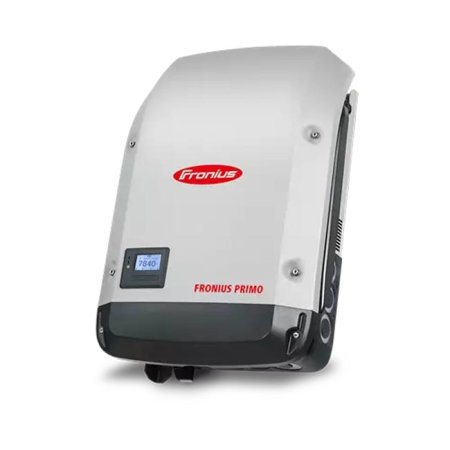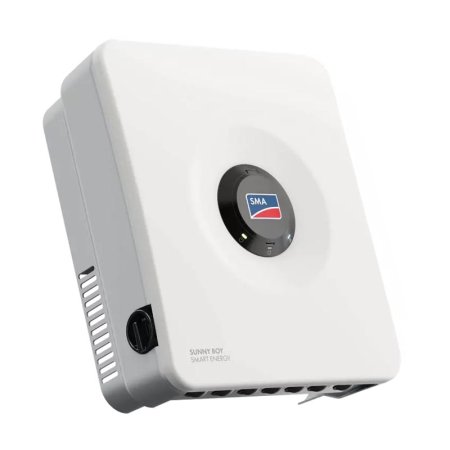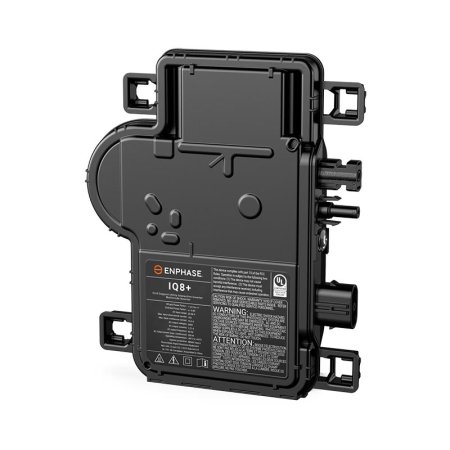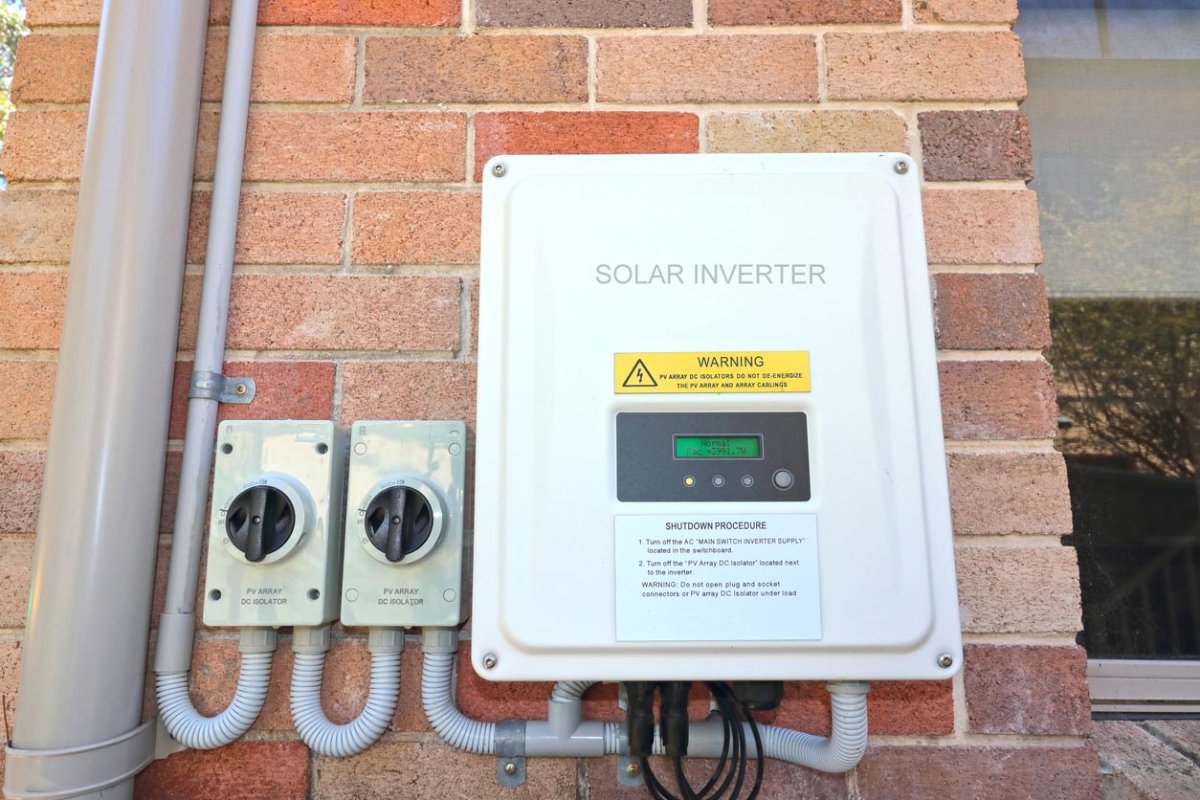
We may earn revenue from the products available on this page and participate in affiliate programs. Learn More ›
Solar panels and solar inverters work hand in hand. The first generates DC energy, and the second converts it to free AC electricity for use in your home. There are a few exceptions where users only need DC power, but these situations are rare. For most people who want to take advantage of free energy from the sun, a solar inverter is a must.
The majority of solar inverter devices last at least 10 years, so decisions made out the outset have long-term impact. In this article, we’re breaking down key features, sharing our product research—we carefully evaluated 15 to find the best of the best from leading manufacturers—and providing advice from expert installers. The result is a comprehensive overview of the technology and a carefully collated list of six of the best solar inverters on the market.
- BEST OVERALL: SolarEdge Home Wave Inverter
- RUNNER-UP: Fronius Primo Solar Inverter
- BEST BANG FOR THE BUCK: Sungrow SG Premium Inverter
- BEST HYBRID: SMA Sunny Boy Inverter
- BEST MICRO: Enphase IQ8 Microinverter
- MOST VERSATILE: Schneider Conext XW Pro Inverter
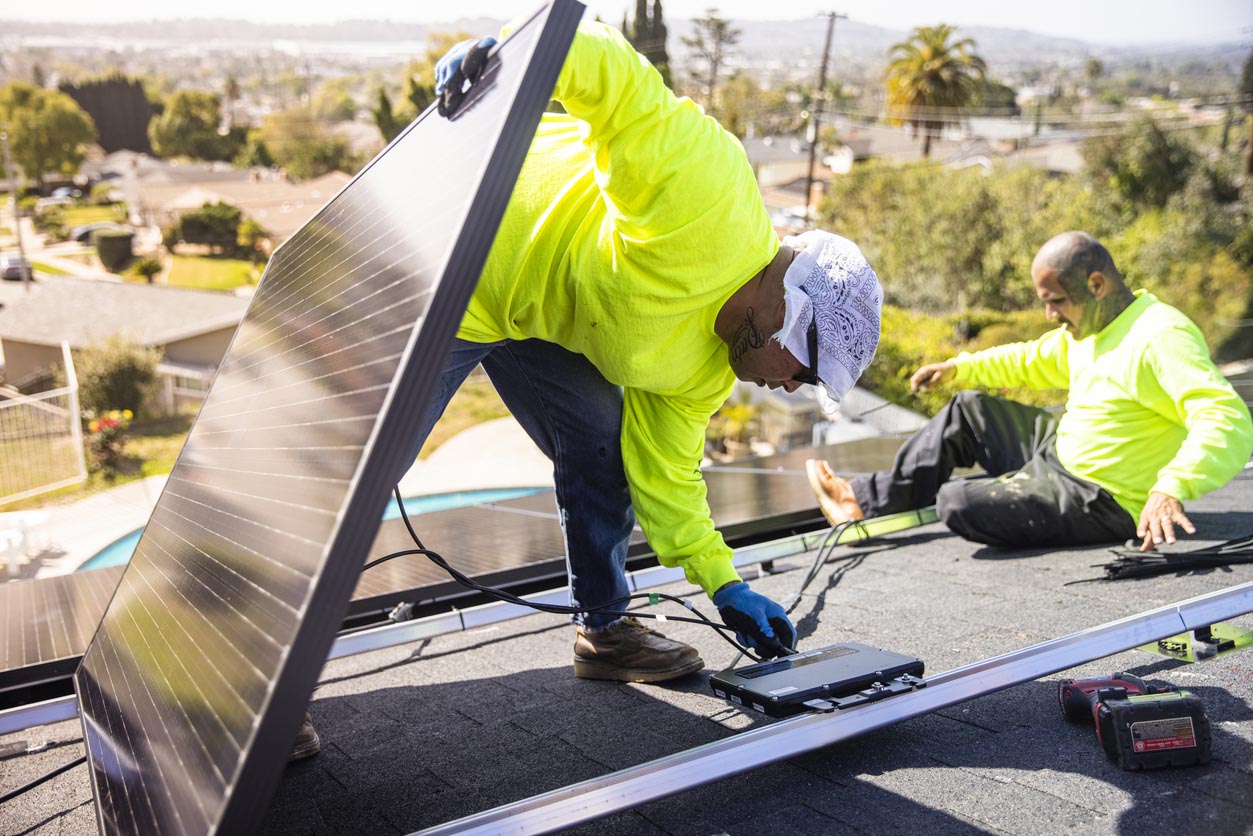
How We Chose the Best Solar Inverters
Solar inverter installations can be surprisingly diverse. In addition to options used in homes and businesses, there are solar pump inverters helping to provide drinking water in remote locations and portable solar inverters that can supply laptops and power tools. However, regardless of the use, a solar panel inverter effectively has just one job: to change the DC (direct current) output generated by solar panels into usable AC (alternating current) electricity. In this article, we’re focussing on models for home use. We looked at the efficiency, power handling, durability, and compatibility of each model.
Geographical location will often impact solar battery performance, which in turn affects the amount of power available to the inverter. Each area is different, and most people consult an installer, according to Joshua M. Pearce, Ph.D., chair in Information Technology and Innovation for the Department of Electrical & Computer Engineering and Ivey Business School at Western University in Pomona, California. “In the end, you will want to rely on your solar installer with what they recommend,” he says. “And before selecting one, you should get three quotes from those that have experience in your area.” He also has a useful document for those who want to DIY their own system.
Our Top Picks
The following solar inverters are top performers in their class, organized by category, so it’s easier to narrow down the options to the particular type that will work best for your situation and needs.
Best Overall
SolarEdge Home Wave Inverter
Pros
- Class-leading 99 percent efficiency means more of the sun’s energy reaches a home
- Wide range of power ratings so it can cope with different-size panel arrays
- Compact and relatively easy to install with NEMA 4X outdoor-ready case
Cons
- The addition of optimizers makes it one of the more expensive inverters
Product Specs
- Type: Optimized string inverter
- Power: 3 kilowatts (kW) to 11.4kW
- Efficiency: 99 percent
The SolarEdge Home Wave is an optimized string inverter, so while energy collection is done from a central point, each panel has separate monitoring and control for greater efficiency. In this case, that efficiency is 99 percent, which is the highest of any inverter we’ve seen. And, almost none of the sun’s energy is lost.
With a power range between 3kW and 11.4kW, the SolarEdge Home Wave Inverter can be paired with solar panel arrays on anything from small homes to commercial installations. The device is compact, so it’s easy to fit in most average-size spaces, plus it has a NEMA 4X case that can be installed outdoors if necessary. It comes with a 12-year warranty that can be extended to 20 or 25 years.
Find a SolarEdge solar inverter distributor at SolarEdge.
Runner-Up
Fronius Primo Solar Inverter
Pros
- Highly regarded Austrian manufacturer with a reputation for quality and long-term reliability
- Suitable for a wide variety of installations from midsize homes to large-scale commercial
- Snap-in case design makes for easy installation and maintenance
Cons
- The unit is quite large and heavy, though outdoor installation is possible
Product Specs
- Type: String inverter
- Power: 3.8kW to 15kW
- Efficiency: 98 percent
The Fronius Primo is made in Austria, and the company has developed a reputation for high-quality reliable equipment. String inverters are the longest-established inverter type. While they’re often more affordable, their efficiency can lag behind more recent developments. However, with a rating of 98 percent, the Fronius Primo remains competitive.
Its range of power handling is excellent, from 3.8kW, which would suit small to medium residential applications right up to the 15kW required for large-scale industrial arrays. The snap-in case design makes fitting and maintenance easy. Although the unit is larger and heavier than many rivals, it is suitable for outdoor installation. The standard warranty is 10 years with extensions available to 15 or 20 years.
Get the Fronius solar inverter at Fronius.
Best Bang for the Buck
Sungrow SG Premium Inverter
Pros
- Affordability and reliability from one of the world’s largest manufacturers of solar devices
- LCD display and smartphone app allow for easy monitoring and updates
- Large-scale 1- and 3-phase systems available for commercial users
Cons
- We could not find extended warranty periods, and Wi-Fi is an optional extra
Product Specs
- Type: String inverter
- Power: 2kW to 30kW
- Efficiency: 98.2 percent to 98.5 percent
Sungrow has been around for more than 25 years and is one of the world’s largest manufacturers of solar panels, inverters, and batteries. For our purposes, we are looking at their residential model, but they also provide commercial and utility systems with power capability of up to a staggering 352kW.
The Sungrow SG Premium string inverter is very affordable, comes rated from 2kW to 30kW, and offers efficiency of between 98.2 percent and 98.5 percent, depending on the model. Installation is straightforward, and both an onboard LCD and smartphone app provide a high level of monitoring and diagnostics.
The Sungrow SG Premium inverter has a standard warranty of 10 years. We understand extensions are possible, but were unable to find details. Additionally, it seems that Wi-Fi, which is usually included, is extra.
Find a Sungrow solar inverter distributor at Sungrow.
Best Hybrid
SMA Sunny Boy Inverter
Pros
- German-made device can be used for on- or off-grid solar systems
- Straightforward integration with solar battery backup for energy provision after dark
- The compact and lightweight case is easy to find space for
Cons
- Modest power handling means it’s not suitable for large solar arrays
Product Specs
- Type: Hybrid string inverter
- Power: 3.8kW to 7.7kW
- Efficiency: 98.5 percent
Hybrid inverters like the Sunny Boy from German manufacturer SMA offer a flexible and budget-friendly solution that can be used with both on- and off-grid solar panel systems. They might not offer the high capacities of some alternatives—the SMA Sunny Boy ranges from 3.8kW to 7.7kW—but they are easy to install and offer efficiency of 98.5 percent
One of the most attractive features of this model is that it can detect an outage and automatically provide power when connected to solar battery backup. The SMA Sunny Boy is a compact unit that’s well suited to situations where space is limited. It offers extensive monitoring and consumption information via Wi-Fi. Basic warranty is 10 years, extendable to 25 years.
Find an SMA solar inverter distributor at SMA.
Best Micro
Enphase IQ8 Microinverter
Pros
- Microinverters are fitted to each panel, offering precise control and monitoring
- A fault with 1 solar panel does not drag down the whole system
- Expansion is easier than with string inverters, and the standard warranty is longer
Cons
- Efficiency is slightly lower than competitors, and installation costs can be higher
Product Specs
- Type: Microinverter
- Power: 0.24kW to 0.366kW (per panel)
- Efficiency: 97 to 97.5 percent
One of the first things many will notice about the Enphase IQ8 microinverter is the comparatively low power ratings. However, microinverters differ from string inverters in that each one attaches to a single solar panel and only has to deal with that panel’s output. As most panels generate between 0.24kW and 0.366kW, the Enphase IQ8 is adequate for the vast majority of installations.
The Enphase IQ8 microinverter offers several benefits. It doesn’t drag the whole system down if one solar panel suffers a fault, which can happen with string inverters. Microinverters are often more effective in multi-angled installations where some panels are shaded while others are not, and they are also easier to expand if users’ needs change. However, because they are attached to each panel, installation is more complex.
The Enphase IQ8 hybrid inverter comes with the industry’s best standard warranty, providing 25 years cover at no extra cost.
Get the Enphase solar inverter at Enphase.
Most Versatile
Schneider Conext XW Pro Inverter
Pros
- Extremely versatile and can integrate with many different Schneider devices
- Suitable for on- and off-grid installations and available as 1- or 3-phase models
- Can also be used to manage nonsolar power backup systems
Cons
- Limited power range, modest efficiency, and one of the more expensive solutions
Product Specs
- Type: Hybrid string inverter
- Power: 6.8kW or 8.5kW
- Efficiency: 94.8 percent to 95.1 percent
The Schneider Conext XW Pro is another hybrid inverter. It can be used for on- and off-grid installations and is easy to integrate with solar batteries for backup power. It can also be used for nonsolar power management when linked to a generator. Two sizes are available, either 6.8kW or 8.5kW, and efficiency is 94.8 percent and 95.1 percent, respectively. The larger model can be configured for three-phase power.
The standout feature of the Schneider inverter is its ability to connect with Schneider’s other solar and electrical products to create a complete integrated system that can be controlled from a single app. This can include battery backup, EV charger, smart electrical panel, smart switches, and household outlets. The warranty is 10 years, and there doesn’t seem to be an option to extend it.
Get the Schneider solar inverter at Signature Solar.
Jump to Our Top Picks
What to Consider When Choosing a Solar Inverter
There are a number of important considerations when choosing a solar inverter system. The following section provides an overview of key areas, but it may be worth consulting an expert for a precise specification relating to your home.
Compatibility
Usually, the solar power inverter is chosen at the same time as the solar panels. Thus, compatibility is a given. However, the type of solar panel can have an impact on choice. Some will only work with inverters supplied by the same manufacturer. Some will work with different inverters, offering options in terms of performance and price. Microinverters are particularly flexible in this regard and may be worth discussing as an option with installers.
Power Output
Generally speaking, the power output of a solar inverter would match or exceed the wattage of the solar panels. The figure might be given as kilowatts rather than watts (W) but the conversion is easy: 1,000W = 1 kW. Often a margin of 15 to 25 percent is added to avoid problems like “clipping” where the inverter reduces power flow to prevent overloading and subsequent damage. In effect, this means the home would not receive all of the electricity being generated.
Equally, there is no point in going massively above the number of watts generated. As Kraig Edelman, CEO of solar energy installer Edelman Inc. in Fairburn, Illinois, points out, “Oversized or undersized components can affect system efficiency and cost-effectiveness.”
Efficiency
Solar inverter efficiency is the amount of DC energy from the solar panels that can be successfully converted to AC. It is given as a percentage. Peak efficiency is the figure most often provided, but it does rely on ideal conditions.
The California Energy Commission produces its efficiency figures that factor in conditions like cloudy days, and produce arguably a better reflection of true efficiency. This relies on manufacturers submitting equipment for independent testing, but it is not mandatory. Efficiency levels from both methods often give figures above 95 percent, so differences between the two ratings may not be significant.
Types of Solar Inverters
The type of solar panel affects its performance, lifespan, and cost. Three main types of inverter dominate the home market: string, string optimized (also called string with optimizers), and microinverters. Off-grid and hybrid inverters are two others that are worth mentioning.
While most solar inverters are single-phase, a 3-phase solar inverter might be warranted in high-demand situations.
String Inverters and Optimized String Inverters
A set of solar panels is usually called a string or array. String inverters (or centralized inverters) are a single collection point for all of the panels linked together. String inverters are well-established technology, and are usually the most affordable. The main drawback with a string inverter is that if one or more panels are shaded, or some kind of fault occurs, the performance of the whole string can suffer.
A popular solution is to add an optimizer to each panel in the string so performance can be monitored and controlled individually. This tends to improve overall power output. If a problem occurs with a single panel, it doesn’t always affect the whole system. Of course, the addition of optimizers increases complexity, and thus the solar inverter price. Both string inverters and optimized string inverters have an expected lifespan of between 10 to 15 years, and this can be extended with regular maintenance.
Microinverters
Microinverters are individual units that attach to each solar panel. Whereas even optimized string inverters still gather and convert energy at a single point, each microinverter tackles the job independently. This can be a major benefit if solar panels are at different angles because those in the shade for part of the day won’t adversely affect others. Microinverters are also a better option if panels might be added at some point.
A microinverter solar system can last 25 years or more, but initial costs are higher. Also, whereas a string inverter is installed at ground level, microinverters are on the roof. If one fails in the middle of an array, it can be challenging to replace.
Off-Grid Inverters and Hybrid Inverters
Off-grid solar inverters (also called inverter-chargers) convert output from solar panels that are not linked to a mains grid. In addition to changing DC to AC power, they might form a solar inverter battery combination or feed a portable power station for storage and use at different locations. Many commercially available DIY off-grid systems include a solar inverter kit.
As the name suggests a hybrid solar inverter (or hybrid string inverter) can be for grid-linked or off-grid use, the latter when combined with battery storage. In that situation, they will often automatically switch to stored energy if there’s a blackout.
Those interested in portable off-grid power might also want to check our article on solar generators (also known as solar inverter generators).
FAQs
We’ve provided a wealth of information with examples of some of the best solar inverters currently available. However, during our research, we found a few questions of a general nature that are not specifically dealt with above, so we have provided answers for those below.
Q. What size inverter do I need?
The size of inverter you need will depend on the power generated by your solar panels. It’s important that it matches or exceeds the watts generated by the solar panel array or the inverter will “clip” (cut off) the excess to prevent damage.
Q. How does a solar inverter work?
Solar panels produce electricity as direct current, but everything in the home uses alternating current, which is more stable and safer. A solar inverter works by changing the flow of direct current, switching it backward and forwards very rapidly so that it becomes an alternating current.
Q. How long do solar inverters last?
It depends on the type of inverter. String inverters and optimized string inverters will typically last between 10 to 15 years, but regular maintenance can extend this. A micro inverter solar system can last 25 years or more.




